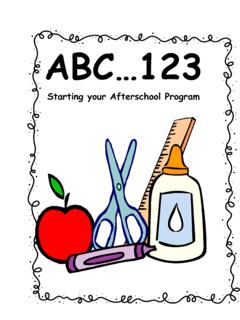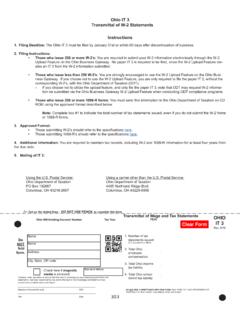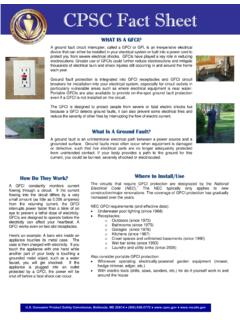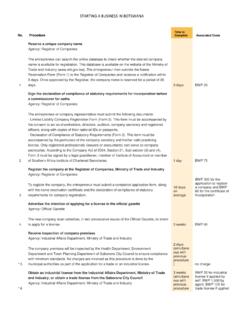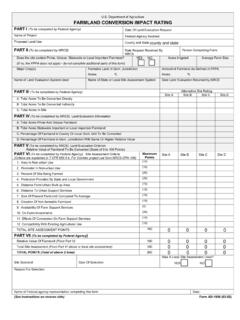Transcription of A Guide to Starting a Composting Program in Your School
1 A Guide to Starting a Composting Program in your School Green Mountain Farm to School 2 Guide to School Composting This manual was funded through a grant from: Northeast Kingdom Waste Management District 31 Church Street, Lyndonville, VT 05851 And developed by: Green Mountain Farm to School . 194 Main Street, Suite 301, Newport, VT 05855 2010 3 Guide to School Composting Table of Contents WHY COMPOST? _____ 6 WHAT IS Composting ? _____ 6 THE BENEFITS OF Composting _____ 6 CLOSING THE LOOP: IMPLEMENTING Composting IN your School _____ 7 REGULATIONS & HEALTH CONCERNS _____ 8 REGULATIONS _____ 8 HEALTH AND SAFETY _____ 8 GETTING STARTED _____ 10 OFF SITE Composting _____ 13 SETTING UP your SYSTEM _____ 13 SUPPLIES AND EQUIPMENT _____ 13 PROCEDURES _____ 15 ANNUAL TIME LINE _____ 16 ROLES & RESPONSIBILITIES _____ 19 STAFF AND COMMUNITY CONNECTIONS _____ 19 ON SITE Composting _____ 21 SETTING UP your SYSTEM _____ 21 SUPPLIES AND EQUIPMENT _____ 21 DAY TO DAY PROCEDURES _____ 23 ON-GOING PROCEDURES _____ 24 ANNUAL TIME LINE _____ 26 ROLES & RESPONSIBILITIES _____ 29 STAFF AND COMMUNITY CONNECTIONS _____ 30 EVALUATION _____ 32 APPENDIX I: FAQ ABOUT Starting A COMPOST AT School _____ 35 APPENDIX II: SAMPLE FLYER _____ 37 APPENDIX III.
2 RECORDING LOGS _____ 41 APPENDIX IV: COMPOST SIGNS_____ 45 APPENDIX V: COMPOST CONTACTS _____ 55 APPENDIX VI: COMPOST BIN DESIGN _____ 59 APPENDIX VI: TROUBLE SHOOTING Guide _____ 63 APPENDIX VIII: RESOURCES _____ 65 4 Guide to School Composting 5 Guide to School Composting Introduction & Goals If your School is like most across the country, recycling has become a part of your culture. Why not take the next steps and start Composting ? With one-third of Vermont s food scraps being thrown away, Composting is a way to promote a responsible and environmentally friendly way to deal with waste. Along with saving landfill space, School Composting programs have many benefits: Compost as a finished product enhances the soil and plant quality in School vegetable and flower gardens Providing educational opportunities that promote sustainable environmental practices Reducing the School s cost of waste removal Providing a medium for many environmental and science related topics for discovery along with opportunities for student development and responsibility, art and inspiration projects The goal of this manual is to help aid schools to establish a successful Composting Program providing information, tips and resources.
3 6 Guide to School Composting Why Compost? What is Composting ? Nature recycles by breaking down organic material and re-using it. Composting is the accelerated form of this decomposition process. In order for nature to decompose, microorganisms eat and inhabit decaying matter to break these materials down even further. Compost happens when materials are gathered in a bin or pile, moistened, and aerated. Fungi, bacteria, and invertebrates are able to take over and Composting happens. In the end, the finished product is humus, dark brown organic matter which builds up soil, saves space in the landfill, and teaches schoolchildren how nature recycles. The Benefits of Composting The benefits of Composting can be limitless. The amount of trash your School produces is reduced. Nutrients are recycled back into the soil.
4 Soil erosion is prevented when you add compost. Money is saved. Awareness is created around recycling and waste reduction efforts. School pride is raised through the positive contribution made to the environment. All compost ingredients generally fall under one of two categories, brown or green. Browns are dry materials such as newspaper, dry leaves, and hay. Greens are fresh, moist materials such as grass cuttings, manure and food scraps. 7 Guide to School Composting Closing the Loop: Implementing Composting in your School We can close the loop on the food system by diverting food waste from landfills and turning it back into soil to grow more food. Students grow food in the gardenFood is served in the School cafeteriaStudents discard food scraps and compost themFood scraps are taken to the compost stationCompost is added to the School garden8 Guide to School Composting Regulations & Health Concerns When Starting up a Composting Program at your School people in the community, and possibly yourself, will have questions about the health and safety of the project.
5 Familiarize yourself with the regulations and safety concerns before you begin. Regulations Section 5-213 Item 34 of the Health Department s code for Food safety indicates that Food waste may be disposed of by Composting with the following requirements: A. Compost sites cannot be in close proximity to the outer openings of a food service establishment. B. A compost site must be properly operated and kept free of insects, rodents, and vermin. C. Compost sites cannot create a health hazard or nuisance to any food establishment or neighboring property owner. Health and Safety Composting can be a fun and educational experience that can involve students, staff, and parents. To make it an educational environment, look into reducing potential risks. 1. Protect those likely to be most sensitive. Involve the teachers, School nurse or physician, parents, and faculty/staff to discover any potentially susceptible students or staff.
6 Protect the privacy of medical information, but determine who may have allergies, be immunocompromised or be prone to infections that could make them sensitive to potential risks. Control exposure of these individuals by restricting who actually comes in contact with the compost. Other students or the teacher could feed the compost bin or take samples. Do not stir or otherwise disturb the pile or bin when people susceptible to inhalation of allergens are nearby. 2. If the temperature of the compost pile is properly maintained (it says at a high temperature), the risk of pathogens is decreased. Be sure to monitor temperatures and turn the pile frequently. For more information, see the fact sheet on Health & Safey Guidance for Small Scale Composting at: 3. Turning the compost pile will release airborne particles and gases that can cause symptoms in some people.
7 So if a pile is turned, be aware of the wind direction and of the susceptibility of those nearby and those doing the turning. Susceptible children should not turn the compost. 9 Guide to School Composting 4. Making compost requires a mix of materials, some high in nitrogen (like food scraps) and others high in carbon (like leaves, newspaper, and hay). Keeping food scraps covered with high-carbon materials will keep down flies and dispersal of fungal spores. Make sure you have a handy source of high-carbon materials. A list of materials and their carbon to nitrogen ratios can be found at: 5. Practice good hygiene. Anyone coming in contact with the compost bin or compost should practice good hygiene by either washing hands well or wearing disposable gloves. Effective hand washing requires use of soap and sufficient time (sing Happy Birthday twice while lathering up).
8 Gloves should be available (use of non-latex gloves such as polyethylene is advisable due to latex allergies) and users should know proper technique for removing gloves (see diagram). Hands should be washed after gloves are removed. Anyone with cuts and abrasions should cover them with bandages and wear gloves. 10 Guide to School Composting Getting Started In six easy steps, here is how to start a Composting Program in your School : 1. Share your ideas and seek out others who may be supportive Include as many people as you can to be involved! Ask the principal, food service staff, janitor staff, teachers, parents, a knowledgeable compost staff (GMFTS staff), and even students to join in. All of these people need to have a voice in the beginning stages to help give ownership of the project, insure its sustainability, and provide a venue for later meetings.
9 Start by having a forum to discuss how Composting can be done at your School , listen to and express concerns, and learn about the benefits. 2. Recruit a core group of people to develop the idea to form a Steering Committee Effective leadership from a few staff members who are committed to making School Composting a reality is critical to the success of the Program . An administrator and a few representatives from other parts of the School community should round out the committee. Members can come from the board of education, administration, custodial staff, kitchen staff, teachers and staff, parents and students. The committee is responsible for developing a clear plan of action, promoting the Program , coordinating the actual work, and evaluating what s working and what s not. To start up a Program will take several hours of planning.
10 Expect to meet once a month, at least, for the first year of the process. As the Program matures, quarterly meetings may be all that is necessary. 3. Research what is involved in a School -wide Composting operation Now that you have rallied the support of the School community and formed a steering committee, it is time to look at the compost Program infrastructure. There are many resources available from organizations to books to websites. This is your time to take advantage of others experience to determine the system that will work best for your School . First, decide if the School will compost on or off site. On site Composting comes with both challenges and rewards. Composting can be used as a curriculum resource and the finished product can be used by the School . Challenges range from the potential issue of odors, rodents and space.
